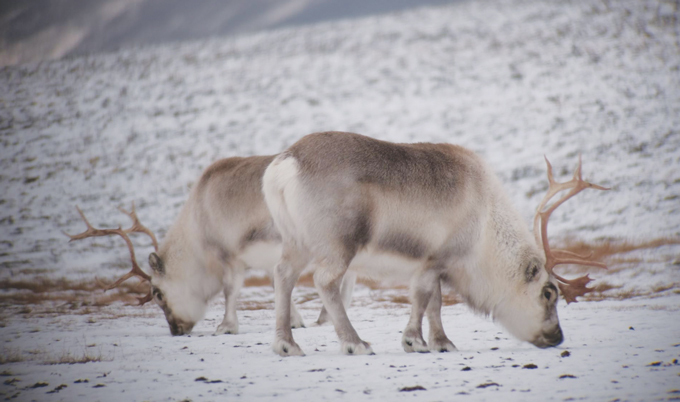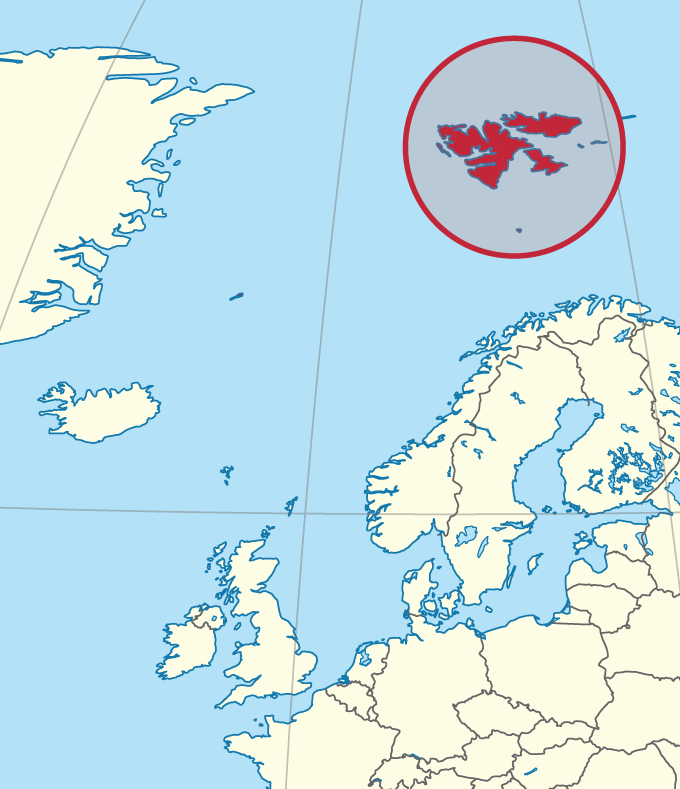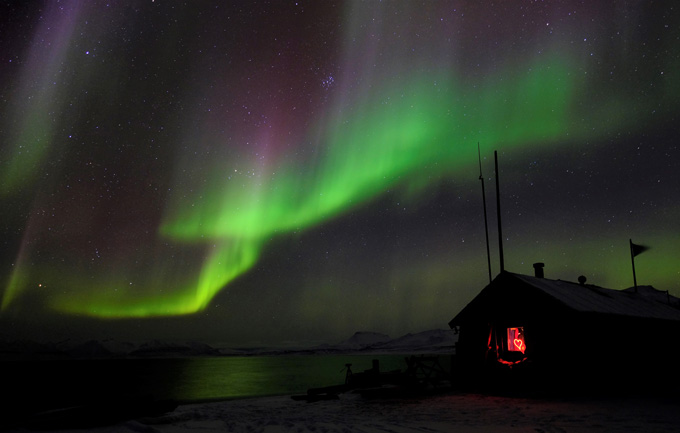Hilde Fålun Strøm and Sunniva Sorby are taking citizen science to the extreme.
In August, the two women moved into a tiny hunting cabin on the high-Arctic Norwegian archipelago of Svalbard. The hut, dubbed Bamsebu, is the only shelter for 140 kilometers. Polar bears prowl the area. It’s not unusual for the winter chill to reach around –30° Celsius.
The conditions are so harsh that few polar scientists themselves collect field data from the area during winter. That’s where Fålun Strøm and Sorby come in — gathering observations about wildlife and the environment that could help scientists’ understand how rapid warming is changing Arctic ecosystems (SN: 12/11/19).
Both Fålun Strøm and Sorby were inspired to support climate research with this nine-month Arctic sojourn after seeing how climate change was affecting polar regions. For example, Fålun Strøm, who has lived for 23 years in Svalbard, has watched the land get greener while glaciers have retreated and average temperatures risen.
Both women, who call themselves the Bamsebu team, have experience treading frozen grounds. Sorby, who has worked more than two decades as a historian and guide in Antarctica, has skied the Greenland ice cap and across Antarctica to the South Pole. Meanwhile, Fålun Strøm, who has spent more than a year total in trappers’ huts across the Arctic, is versed in dogsledding and big-game hunting.
“It’s as if all of my years in Svalbard have prepared me for this overwintering,” Fålun Strøm says. But even for her, the Bamsebu experience is rough. There is no running water, so the women thaw chunks of ice hacked from a block outside their hut. They chop wood to keep the oven ablaze for cooking and heating the cabin. Venturing outside requires layers of clothing and a gun to guard against polar bears.
 On the Norwegian archipelago Svalbard, two citizen scientists are keeping detailed logs of the animals they see, such as reindeer, foxes, polar bears and belugas. Hearts in the Ice
On the Norwegian archipelago Svalbard, two citizen scientists are keeping detailed logs of the animals they see, such as reindeer, foxes, polar bears and belugas. Hearts in the Ice
“We photograph incessantly,” snapping foxes, reindeer, polar bears and beluga whales as part of the women’s wildlife observations for the Norwegian Polar Institute, Sorby says. Those observations may give insight into how animals in the region are adapting to warmer weather.
In November, the women encountered a polar bear that had recently hunted a reindeer. That was odd, because polar bears normally eat seals. Scientists suspect bears may be forced to change eating habits because warmer ocean currents are drastically shrinking sea ice where bears hunt seals (SN: 9/25/19).
For NASA, the women are photographing different types of clouds, such as shimmery noctilucent clouds (SN: 7/16/19), as well as helping observe daytime auroras visible only in 24-hour darkness (SN: 2/7/20).
 The trapper’s hut where Fålun Strøm and Sorby are overwintering is in the high Arctic, at 78° N, on the Norwegian archipelago of Svalbard (circled). Their nearest neighbor is the town of Longyearbyen about 140 kilometers away. TUBS/Wikimedia Commons (CC BY-SA 3.0)
The trapper’s hut where Fålun Strøm and Sorby are overwintering is in the high Arctic, at 78° N, on the Norwegian archipelago of Svalbard (circled). Their nearest neighbor is the town of Longyearbyen about 140 kilometers away. TUBS/Wikimedia Commons (CC BY-SA 3.0)And the women are collecting phytoplankton samples for the FjordPhyto citizen science project, which usually relies on tourist ships to collect samples from fjords in Antarctica. The project’s goal is to uncover how phytoplankton near the poles are reacting to glaciers melting, and sending more freshwater into marine environments. Some studies in the Antarctic show a shift from bigger phytoplankton to smaller phytoplankton, which leaves less algae for animals like fish and krill to eat, says FjordPhyto leader Allison Cusick, a biological oceanographer at the Scripps Institution of Oceanography in La Jolla, Calif. The samples from the Bamsebu team could indicate whether a similar shift is happening in the north.
“This type of endeavor … is a fantastic example of citizen science that’s generating data that we just simply haven’t seen before,” says remote-sensing researcher Eric Saczuk at the British Columbia Institute of Technology in Burnaby, Canada. Saczuk equipped the two women with a drone to take aerial observations around Bamsebu — something that’s rarely been tried before in polar science, he says.
The long winter night, stretching from sunset in October to sunrise in February, presented a new challenge for Sorby, who had never before lived through months of darkness. Outdoors, the pair could only see as far as the beams of their head lamps. But that darkness also opened up another world to Sorby. “When the night sky is full of stars, planets, satellites and the aurora … I feel showered with lights.”
 During the months-long Arctic winter night, the only lights in the sky are stars, planets, satellites and auroras. When Fålun Strøm and Sorby could finally again see outside without head lamps or night vision binoculars, “it was as if we were reborn,” the team wrote in a blog post on January 23. Hearts in the Ice
During the months-long Arctic winter night, the only lights in the sky are stars, planets, satellites and auroras. When Fålun Strøm and Sorby could finally again see outside without head lamps or night vision binoculars, “it was as if we were reborn,” the team wrote in a blog post on January 23. Hearts in the Ice
The original plan was for the Bamsebu team to return home in early May, greeted by family, friends and their international science partners — although the ongoing coronavirus pandemic has put those plans on hold (SN: 3/4/20). “We are not sure how long we will be here,” Sorby says. “It will be surreal to think of leaving this simple, purposeful life and coming back to a world that has been turned upside down.”
Source: Heart - www.sciencenews.org



